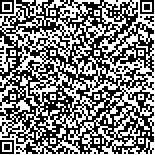下载中心
优秀审稿专家
优秀论文
相关链接
摘要

本文运用ASTER遥感数据识别与提取新疆南天山铜花山地区蛇绿混杂岩带岩性信息。首先,利用比值法快速区别岩性,并比较了识别同一种岩性的不同指数的性能;然后,将对数残差算法应用在ASTER数据的短波红外波段上,在区域尺度上把蛇绿岩杂岩体同围岩区分开来;最后,运用标准光谱数据和光谱角填图法识别出多种蛇绿岩成分及其空间分布。现有地质图和野外验证反映出该方法有一定效果。利用混淆矩阵对光谱角填图法分类结果定量评价,结果表明,把ASTER的可见光-近红外、短波红外波段数据结合在一起进行岩性分类,可以达到比单独用短波红外数据分类更高的分类精度。
This study explores the potential of using ASTER data to extract lithology information on the ophiolitic mixtite belt in the Tonghuashan region of southern Tianshan.
First, we used the band ratio to quickly obtain information on rock assemblages. Second, we chose a number of lithological identification indices that have been established in previous research, including the Quartz Index (QI), Carbonate Index (CI), and Mafic Index (MI). We used these indices to distinguish among the silicates, carbonate rocks, and mafic-ultramafic rocks in the study area, and we also compared their performance in identifying the same kind of lithology. Third, we applied the log residual algorithm method on all the shortwave infrared (SWIR) bands of the ASTER data to examine its effectiveness in detecting ophiolite ingredients. Lastly, we employed the laboratory spectral data and spectral angle mapper method to identify the spatial distribution of the ophiolite complex. Quantitative evaluation results were achieved using the confusion matrix, and the related evaluation factors were obtained after separately applying the method on the ASTER SWIR and visible and near-infrared (VNIR)-SWIR data.
In this study, we found that the band ratio method is suitable for suppressing the influence of the terrain and that it helps identify and understand geological information. On the one hand, the lithology index QI (2008) image displayed less noise and more correctness than the lithology index QI (2005) image in displaying the spatial distribution of silicate rocks, and the lithology index CI (2005) image was more accurate than the CI (2003) image in the distribution of marble. On the other hand, the lithology indices MI and QI (2008) images collated with each other well and showed most of the ultramafic rocks in the area. The log residual algorithm successfully discriminated the ophiolite complex body from the surrounding rocks at the regional scale. The method of using the standard spectral data and spectral angle mapper to detect the spatial distribution of the ophiolite complex was relatively effective, as demonstrated by comparing the results of the method with the existing geological map and field observations. The distribution of mafic-ultramafic rocks was consistent with the geological map, but the peridotite in the southeast was not extracted because it was serpentinized, and serpentine is heavily superimposed on carbonation. Some peridotite outcrops, which were not manifested in the geological map, were also found. The distributions of dunite and peridotite were similar because dunite and peridotite are mainly composed of olivine. Gabbro and diabase outcrops were small and often symbiotic in the field; thus the accuracies of their recognition were low. The scope of basalt was larger than that in field observations because mafic lava is usually symbiotic with peridotite and gabbro, and mafic lava was altered into chlorite and epidote because of the hydrothermal alteration of the greenschist facies. However, the results for marble recognition were more accurate than those for mafic-ultramafic rocks. The quantitative evaluation of the confusion matrix demonstrated that classification using the combined ASTER VNIR and SWIR bands achieves a higher overall accuracy and Kappa coefficient than those using the ASTER SWIR bands alone.
The band ratio and log residual algorithm methods can obtain general lithology information on ophiolite. Applying laboratory spectral data and spectral angle mapper on ASTER VNIR-SWIR data helps achieve increasingly accurate and detailed information on the spatial distribution of ophiolite ingredients. However, the potential of using other methods in combination with the methods mentioned above must be continuously explored to improve the accuracy of lithology identification.

